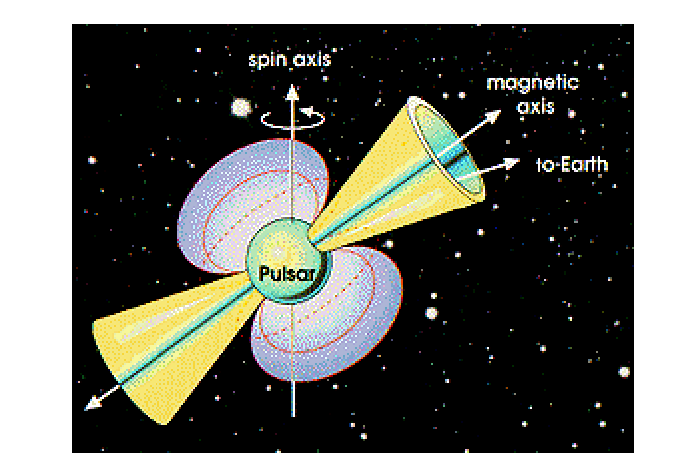Revealing Pulsar (Spinning neutron star!)
Pulsars are objects that are about the size of a large city but contain more mass than the sun(nearest star to earth). Scientists are using pulsars to study extreme states of matter, search for planets beyond Earth's solar system and measure cosmic distances. Pulsars also could help scientists find gravitational waves, which could point the way to energetic cosmic events like collisions between supermassive black holes.
Pulsars were discovered in 1967, pulsars are actually very fascinating members of the cosmic world. I personally call pulsars as mad dancing stars of space !
Pulsars radiate two steady, narrow beams of light in mutually opposite directions. Although the light from the beam is steady, pulsars appear to flicker because they also spin.
It's the same reason a lighthouse appears to blink when seen by a sailor on the ocean: As the pulsar rotates, the beam of light may sweep across the Earth, then swing out of view, then swing back around again. '
To an astronomer/observer on the ground, the light goes in and out of view, giving the impression that the pulsar is blinking on and off.
The reason a pulsar's light beam spins around like a lighthouse beam is that the pulsar's beam of light is typically not aligned with the pulsar's axis of rotation making its radiated light moving with some angle with plane of rotation.
Pulsars spin because the stars from which they formed also rotate, and the collapse of the stellar material will naturally increase the pulsar's rotation speed/ spin.
Pulsars are the size of small cities, so for them such high speeds is no small feat. In fact, millisecond pulsars require an additional source of energy to get going to such a high rotation rate.
How do pulsars radiate light? Scientists don't yet have a detailed answer to that question, according to Alice Harding, an astrophysicist at NASA's Goddard Space Flight Center in Greenbelt, Maryland, who specializes in pulsars. What's more, scientists have found that different mechanisms are likely responsible for producing different wavelengths of light from the area above the pulsar's surface, Harding said.
What does seem clear to scientists is that pulsar emissions are powered by the pulsar's rotation and its magnetic field, according to Roger Romani, a professor of physics at Stanford University who studies pulsars and other compact objects.

Comments
Post a Comment